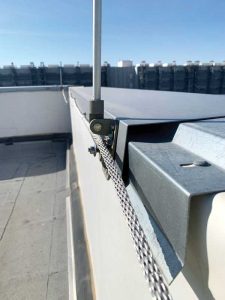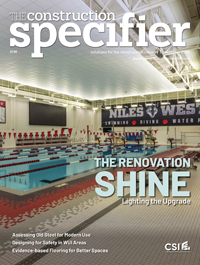Dissecting code language updates to lightning protection systems

Proposed updates or changes to the IBC go through a series of developmental process steps. The first is during a committee action hearing. Approval of a proposed change at this stage is based on a simple majority vote by a technical committee. Further changes are subject to a public comment hearing in front of the International Code Committee’s (ICC) governmental membership. In both steps of the process, testimony, arguments and opposing viewpoints are verbally presented about the proposed changes. However, once the proposed change reaches the public comment hearing step, revisions to the code then require approval by two-thirds of the ICC’s governmental voting members.
In early April 2022, the ICC held a committee action hearing on this topic. Some from the lightning industry attended the hearing and spoke out against the proposed new language. The ICC technical committee disapproved the proposed language in a resounding 13 to one vote with the following commentary:
Committee Reason: Disapproved as adding an exception for the attachment is inappropriate. The committee stressed that the proposal needs additional coordination between disciplines.
Issues with the originally proposed language
From the lightning protection industry’s perspective, there were several critical problems with the draft language presented. According to the NFPA and UL standards, lightning protection must be installed around the outmost perimeter of a structure, within 0.6 m (2 ft) of the edge and fastened every 0.9 m (3 ft). The reason for this design is to ensure the LPS is located on the portions of the structure to which lightning is typically attracted. The wording from the updated language was in direct conflict with the standards, as noted below:
- Lightning rods (strike termination devices) are required to be within 0.6 m (2 ft) of the outside corner. Not allowing the lightning protection industry to attach to the coping would make this impossible, especially on rooftop objects such as cameras, antennas, or any items that project over the top of the coping and are on the outer edge of the building.
NFPA 780 Section 4.7.2.1 states: “As shown in Figure 4.7.2.1, the distance from the strike termination devices to ridge ends on pitched roofs or to edges and outside corners of flat or gently sloping roofs shall not exceed 2 ft.” Similar language is provided in UL 96A, Section 8.1.5.2.








